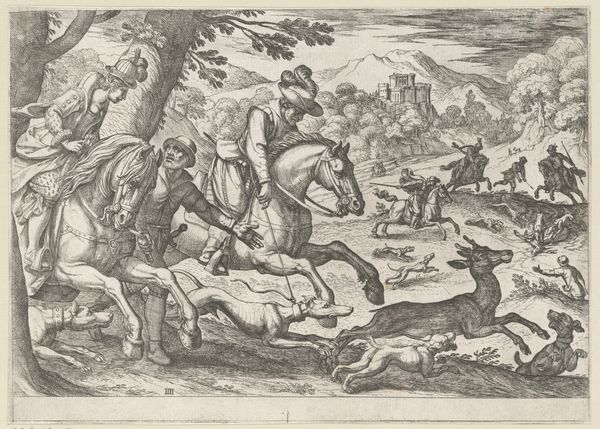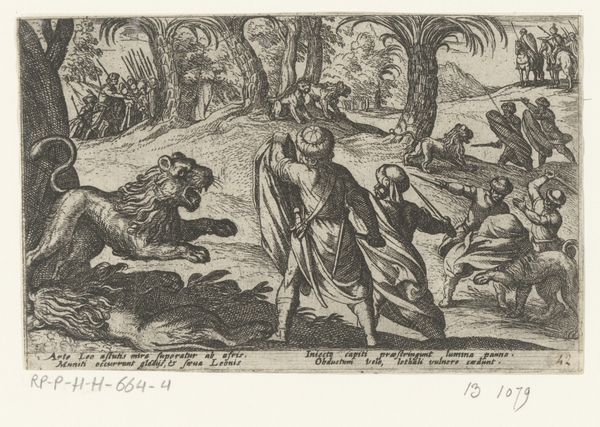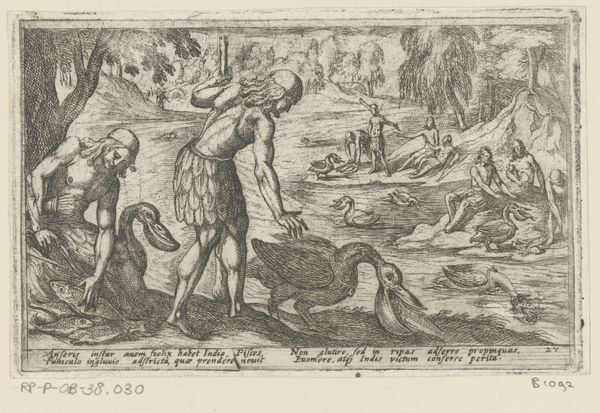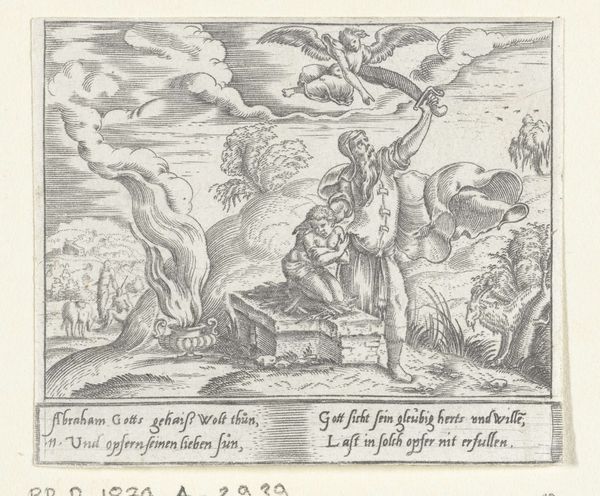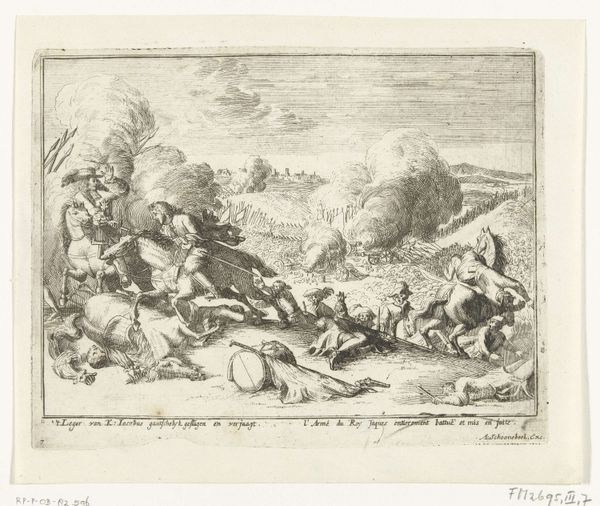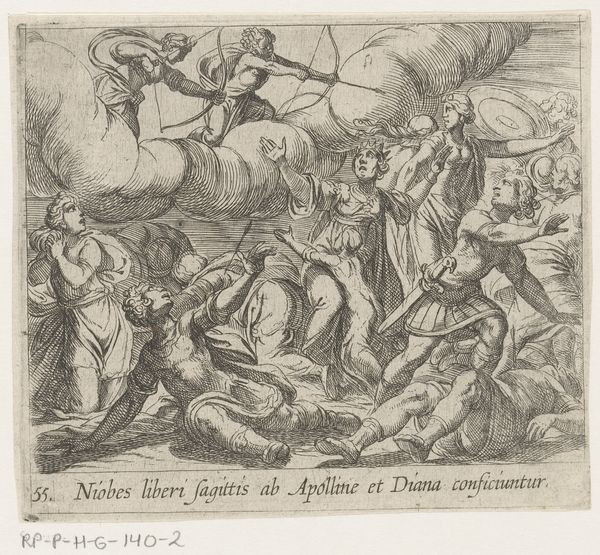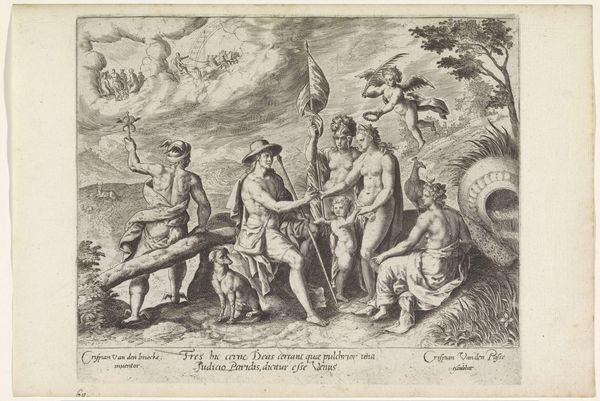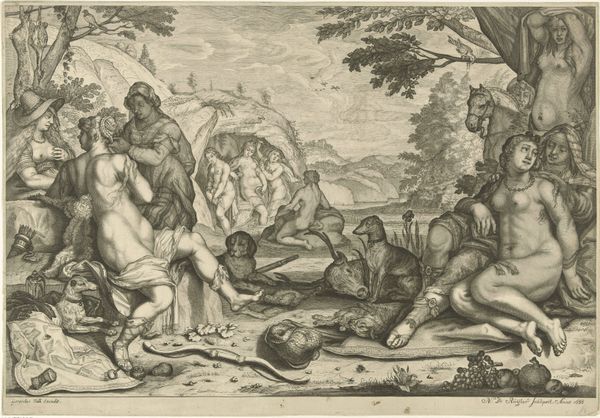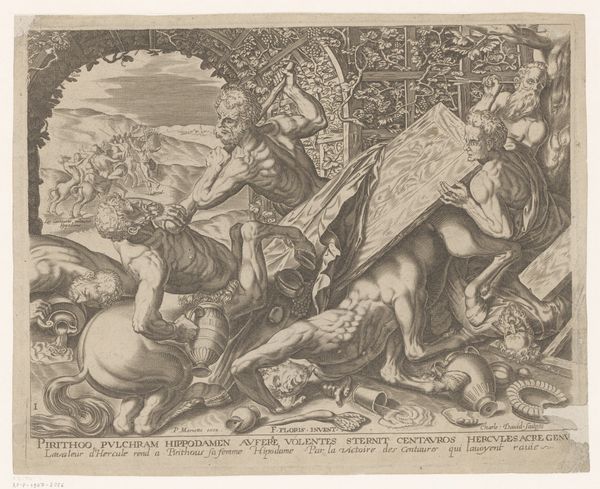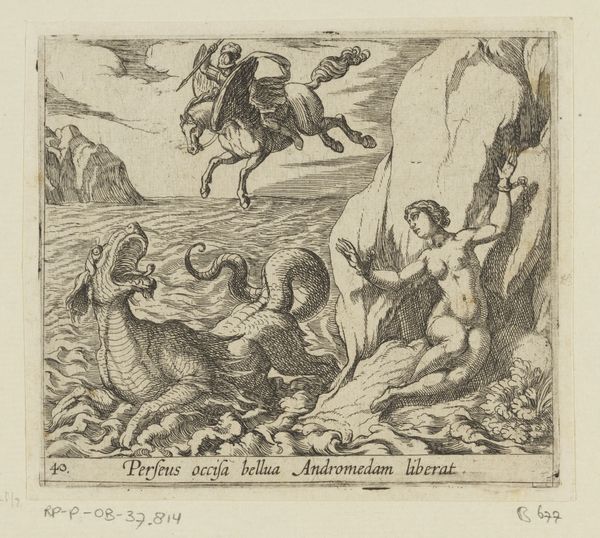
drawing, etching, ink
#
drawing
#
allegory
#
baroque
#
etching
#
figuration
#
ink
#
history-painting
Dimensions: height 162 mm, width 225 mm
Copyright: Rijks Museum: Open Domain
Curator: This etching, realized with ink, presents a somewhat tumultuous scene. The author is Petrus Clouwet, and it's entitled "Aesculapius wekt Hippolytus tot leven," dating roughly between 1636 and 1670. It clearly leans into a Baroque sensibility. Editor: Chaotic is my first impression. It feels like everything is moving—horses rearing, a bull emerging from the sea, a body on the ground... and there's a strange detachment, like these disparate elements were forced together. It's unsettling. Curator: Absolutely. Clouwet is capturing a moment rife with symbolism from classical mythology. Aesculapius, the god of medicine, is in the midst of reviving Hippolytus. His tragic demise was caused when his chariot was frightened by a sea monster sent by Poseidon. Editor: Ah, that explains the sea monster—or rather, the bull—and the wrecked chariot. The image now reflects not only resurrection, but the perils of unchecked divine intervention and perhaps male entitlement. Hippolytus’ fate seems entangled with patriarchal power. Curator: Exactly. And look at the figure of Artemis in the right. She represents not only chastity but also the mourning of lost innocence and divine protection failing, as the inscription on the print remarks "unfortunate in love". She has the possibility of avenging her follower and favored one, with bow in hand, but perhaps her own vow hinders it. She embodies the tension between divine duty and empathy. Editor: The whole composition underscores this sense of disquiet. The sharp contrasts, the overwhelming action—it echoes the tumultuous era that brought these images to life. A period of baroque absolutism juxtaposed with revolution. Clouwet exposes societal struggles for meaning. What’s to gain in a broken society, as symbolized by this mythic tale? Curator: Very insightful! Consider, too, the symbolic weight of resurrection itself. It offers hope but raises questions about destiny, intervention, and the delicate balance between mortal and divine realms. Its powerful symbolism crosses all temporal planes, to present day society still debating on themes of loss and intervention. Editor: A visual reminder that stories of power and vulnerability continue to shape our collective psyche. The Baroque might have been about grandeur, but Clouwet unearths the unease beneath it. Curator: It’s true that this print provides a profound allegorical lesson in a small frame. Editor: Thank you, I definitely look at it differently now!
Comments
No comments
Be the first to comment and join the conversation on the ultimate creative platform.
